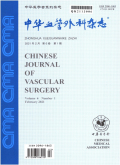摘要主动脉弓腔内分支重建是国内外血管外科领域的研究热点。近年来,各种创新技术不断涌现,其中烟囱技术是颇具代表性的一种。过去20年中,烟囱技术经历了萌芽、广泛普及到逐步降温、趋于选择性使用的发展历程。内漏作为烟囱技术最主要的并发症,制约了其长期推广与应用。如何规范使用该技术,关键在于术者对其的客观认识和熟练掌握。从精准判断最佳适应证到严格规范操作细节,每一环节都会影响烟囱技术发挥其微创性和快速恢复的优势,同时决定了能否有效降低内漏等并发症发生率,从而实现最佳临床疗效。
更多相关知识
abstractsEndovascular branch reconstruction of the aortic arch is a focal point of research in vascular surgery both at home and abroad. In recent years, various innovative techniques have emerged continuously, among which the chimney technique is a representative one. Over the past two decades, the chimney technique has gone through a development process from its inception to wide popularity, followed by a gradual decline and a shift toward more selective application. Endoleak, as the primary complication of chimney technique, has restricted its long-term application and widespread adoption. How to make good use of this technique lies in the surgeon's objective understanding and proficient mastery of it. From the precise judgment of the best indications to the standardization of operation details, each step plays a crucial role in maximizing the minimally invasive nature and rapid recovery benefits of the chimney technique. At the same time, meticulous execution is essential to effectively reduce the incidence of complications such as endoleak, ultimately achieving the best possible clinical outcomes.
More相关知识
- 浏览0
- 被引0
- 下载0


相似文献
- 中文期刊
- 外文期刊
- 学位论文
- 会议论文



 换一批
换一批 换一批
换一批



